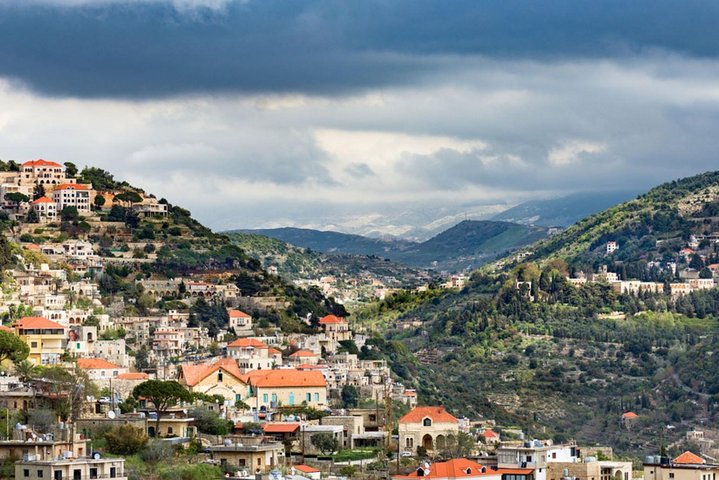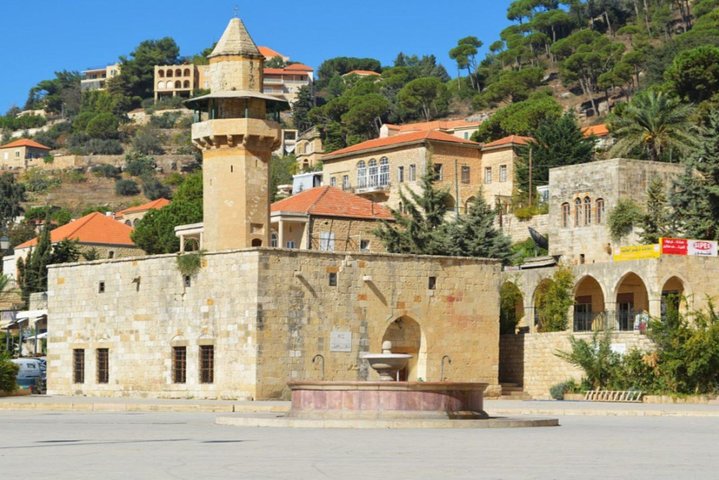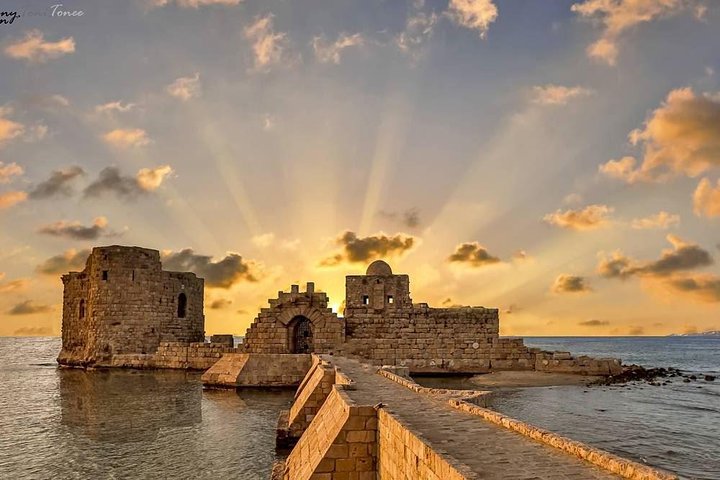Embark on a small-group guided tour to Sidon, Tyre, and Maghdouche. Explore ancient sites, including the Tyre Hippodrome and the powerful city-state of Sidon. Visit the Marian shrine of Our Lady of Awaiting. Enjoy a local lunch and convenient hotel pickup and drop-off.
Embark on a small-group guided tour to Sidon, Tyre, and Maghdouche. Explore ancient sites, including the Tyre Hippodrome and the powerful city-state of Sidon. Visit the Marian shrine of Our Lady of Awaiting. Enjoy a local lunch and convenient hotel pickup and drop-off.
- Sidon - Sidon, one of the most ancient Phoenician cities, was established in the 3rd millennium BC and flourished in the 2nd millennium. Renowned for its purple dyes and glassware, Sidon was also visited by Jesus. During the Crusades, the city changed hands multiple times, experiencing destruction and reconstruction.
- Crusaders Sea Castle -…
-
Sidon - Sidon, one of the most ancient Phoenician cities, was established in the 3rd millennium BC and flourished in the 2nd millennium. Renowned for its purple dyes and glassware, Sidon was also visited by Jesus. During the Crusades, the city changed hands multiple times, experiencing destruction and reconstruction.
-
Crusaders Sea Castle - Constructed by the Crusaders in the 13th century, the Sidon Sea Castle is situated on a small island linked to the mainland by a causeway, serving as a fortress in the holy land. It stands as a significant historical landmark in Sidon, Lebanon. The Mamluks largely destroyed the castle in 1291, but it was restored by Fakhr el-Dine Maan II in the early 17th century. Old prints depict the fortress as a site of great beauty, though few of its original decorations remain.
-
Khan al-Franj - Khan al-Franj is a key attraction in Sidon. Built in the early 17th century by Emir Fakhreddine II, it served as a hotel for ambassadors and a hub for commercial exchange between Lebanon and France. The hotel quickly became a center for literature, religion, history, industry, and diplomacy, fostering culture and civilization. It features a typical khan design with a large rectangular courtyard, a central fountain, and surrounding covered galleries.
-
Soap Museum - Saida - The Soap Museum in Sidon is dedicated to Levantine soaps. Originally constructed by the Hammoud family in the 17th century, the museum explores the history, development, and manufacturing techniques of soap making in the region. Visitors can watch demonstrations of traditional olive oil soap production and learn about the history of “hammam” (bath) traditions. The museum also showcases artifacts discovered during onsite excavations, including clay pipe heads from the 17th to 19th centuries and pottery fragments. The building itself is an old soap factory from the 17th century, with parts dating back to the 13th century.
-
Sidon Souks - The souk in Sidon is the hub of retail and craft industry activities. It is a labyrinth of narrow alleyways filled with small kiosks, shops, cafes, street vendors, butchers, grocers, shoemakers, tailors, and jewelers.
-
Basilica of Our Lady of Mantara - بازيليك سيدة المنطرة - Our Lady of Awaiting, also known as Our Lady of Mantara, is a Melkite Greek Catholic shrine located in Maghdouché, Lebanon. Discovered on September 8, 1721, by a young shepherd, the shrine includes a tower topped with a statue of the Virgin and Child, a cathedral, a cemetery, and a sacred cave believed to be where the Virgin Mary rested while waiting for Jesus.
-
Tyre - Tyre is an ancient Phoenician port city and the birthplace of Elissar, the Phoenician princess who founded Carthage. It was globally renowned for its purple dye made from murex sea snails. Two main archaeological sites, “Al-Bass” and “Al-Mina,” highlight its historical importance. With a stunning seaside location, Tyre is a popular holiday destination known for its pristine beaches. The town’s origins date back to around 2750 BC, after which it was ruled by Egyptians and the famous King Hiram, under whom it thrived. It was later colonized by Assyrians, Neo-Babylonians, Greeks, Seleucids, Romans, Byzantines, Arabs, Crusaders, Mamluks, and Ottomans.
-
Al-Bass Archaeological Site - The Al Bass Archaeological Site is the largest and best-preserved example of a Roman Hippodrome. Located in the Tyre El Bass sector, which served as the main entrance to the town in ancient times, it includes the remains of a necropolis on either side of a wide monumental causeway dominated by a Roman triumphal arch from the 2nd century AD. Other notable features include an aqueduct and the 2nd-century hippodrome, one of the largest in the Roman world. The site contains a necropolis with several hundred well-preserved sarcophagi, an intact Roman road, an aqueduct, and a monumental arch.

- Comfortable transportation
- Lunch
- Tour leader
- Small group sizes
- In-vehicle air conditioning
- Professional, knowledgeable guides
- Hotel pickup and drop-off
- Comfortable transportation
- Lunch
- Tour leader
- Small group sizes
- In-vehicle air conditioning
- Professional, knowledgeable guides
- Hotel pickup and drop-off
- Entrance fees
- Entrance fees
- Entrance fees
- Entrance fees
- Entrance fees
- Entrance fees
Experience the highlights of Tyre with a trained guide, and acquire a deep understanding of a city rich in ancient sites such as the Tyre Hippodrome. This city is among the oldest constantly occupied cities globally.
Also referred to as Saida, you’ll explore Sidon, a city with traces of habitation dating back to prehistoric times, and once the most…
Experience the highlights of Tyre with a trained guide, and acquire a deep understanding of a city rich in ancient sites such as the Tyre Hippodrome. This city is among the oldest constantly occupied cities globally.
Also referred to as Saida, you’ll explore Sidon, a city with traces of habitation dating back to prehistoric times, and once the most influential city-state of ancient Phoenicia.
The trip concludes with a visit to Our Lady of Awaiting, or Our Lady of Mantara, a Marian shrine in Maghdouché, Lebanon. This shrine is believed to be the resting place of Virgin Mary while waiting for Jesus during his Sidon visit.
The tour package includes lunch and the convenience of hotel pickup and drop-off.
For a full refund, cancel at least 24 hours before the scheduled departure time.
For a full refund, cancel at least 24 hours before the scheduled departure time.


















